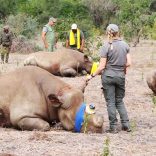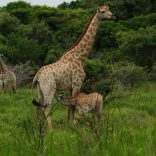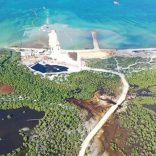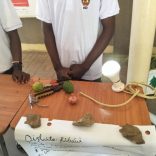Mozambique: Environmental impact of mining will take time to heal in Manica province - National ...
Mozambique: Low tide among causes of mass dolphin deaths in Bazaruto, Inhambane – AIM report

Photo: ANAC
The death of 111 dolphins last week in the Bazaruto Archipelago National Park (PNAB), Mozambique’s largest marine conservation area, in the southern province of Inhambane, resulted from beaching during low tide, according to the preliminary results of an investigation intended to find out the causes of the mass deaths.
According to a press release issued on Thursday by the Ministry of Land and Environment, the team tasked with the responsibility to find out the root causes of the mass death concluded that the mammals had no signs of mutilation or of contamination by visible hydrocarbons.
The dolphins were found on the western part of Bazaruto Island, an area where the sea has a depth that varies between three and seven meters. Normally dolphins do not have the habit of entering this area, which suggests a “navigation anomaly”.
The study also concluded that 23 per cent of the dolphins had an empty stomach, an indication that they were not feeding on the spot. As for suggestions that seismic operations by hydrocarbon companies had caused the deaths, the release pointed out that there had been no recent seismic surveys in the region.
The release noted that the dolphins died during or shortly after cyclone Guambe passed though the area. Similar phenomena had been recorded by the inhabitants of the Island in 1997 and in 2006, but involving a smaller number of animals in both cases.
To study further the causes of the deaths, samples have been taken and sent to specialized laboratories inside and outside the country.
All the dead animals were spinner dolphins, an oceanic species that travels to the open sea during the night to feed in depths of between 10 and 50 metre, and comes close to the coast during the day to rest, in areas up to 20 metres deep.
Spinner dolphins are a common marine mammal in the Mozambique Channel, where there are an estimated 10,000 to 15,000 individuals. The species is not endangered.
The study consisted of observations made on the spot, and several consultations carried out with the network of experts from the region and internationally, namely: the Group of Cetacean experts from the International Union for the Conservation of Nature (IUCN); the International Whaling Commission and the Expert Stranding Panel for Africa and the Indian Ocean.












Leave a Reply
Be the First to Comment!
You must be logged in to post a comment.
You must be logged in to post a comment.